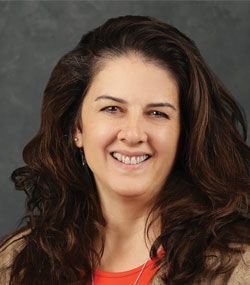
Duane’s father stops by the farm several times a week, just to check up on what we are doing that day and to see if there is anything new happening.
The other day he stopped by and it just happened that the feed truck rolled in right after him. He immediately started reminiscing about his early years when he worked for a feed mill.
It was his job to deliver feed to the farmers. I heard a few good stories of how it used to be. “You know, I remember delivering feed in bags and milking cows by hand and now look at how it’s done. The changes we’ve made are amazing,” he said.
Later that day, I had the privilege to share our farming story with a Rotary Club in Swarthmore, Pa., a suburb of Philadelphia. If you ever have an opportunity to speak to a local Rotary Club, I encourage you to do so. I typically end my time with a question and answer session, and every time there is someone in the audience who “remembers when.”
A member of the Swarthmore Rotary remembered milking a dozen cows by hand with his uncle. Like my father-in-law, he also commented on the number of modifications made in his span of years. Change happens every day, but when you stack up the changes over several decades, the transformation is significant.
Both the Swarthmore gentleman and my father-in-law’s comments got my mind reeling. When I am older, wiser, and stopping by the farm to “check up on things,” what changes will I reference?
Maybe it will go something like this: “I remember when we fed our calves two times a day in individual hutches. We used to milk our cows in a parlor, 12 on each side. They delivered the feed in a huge truck and blew it into the grain bin.”
It also makes me wonder about the capability of technology; will robots totally take over the milking procedure? Where will drones fit into our dairy routine? How will our feed get delivered?
I remember when Duane’s grandmother was in her later years, she wanted to see our new freestall barn. She was not getting around easily, so we drove her through the barn in Aunt Jane’s car.
She was amazed at the way we were taking care of our cows. “My goodness, Bud and Zookie would have a lot to say about this.” Grandma Hoober was referring to Duane’s grandfather and my grandfather, who were good friends.
Both Grandpa Hoober and my Grandpa Zook were involved in farming. Grandpa Zook had a dairy farm and worked for Grandpa Hoober’s farm equipment dealership, CB Hoober. His equipment line also included Acorn barn cleaners that Grandpa Zook sold and repaired.
Now that is a piece of equipment that I do not mind putting on the extinction list. I am sure that will be part of Duane’s reminiscing. There was something amiss about pullies, paddles, and clumps of manure that don’t naturally flow, especially on a Sunday morning. It always broke down on a Sunday morning.
But hey, my grandfather and great-grandfather would probably say, “Grab a fork and do it by hand if you don’t like the new technology.”
To my grandfather, the barn cleaner was a great time saver, much better than his past experiences. But to Duane, it was a piece of outdated equipment and he was happy to see it retired.
One of the great things about farming is the fact that each of us can decide what changes are acceptable and more efficient for our dairy operations.
We are making a much bigger change in our manure handling this year by installing a methane digester. It seems to me that change is a wheel that constantly turns. And you know that a wagon does not pull easily with a flat tire or broken wheel.
Sometimes I fight change, and I wish the wheels weren’t spinning quite as fast as they are. But the truth is, I also do not want to go back to the way things were before. I like the improvements we have made over decades of farming.
However, there are changes that do not work and take us back to the drawing board. Take our calf feeding for example. Years ago, we grouped our calves in pens of six and fed them using mob feeders. For a variety of reasons, it did not work and it was not long until I ripped them out and went back to bottles.
A few months ago we started feeding acidified milk, and we dusted off the mob feeders for a second try. This time the adjustment works, and I am very happy with the results we get with our calves.
I guess you can say that we fixed the flat tire and got it rolling again. That way, when my grandchildren are showing me their new calf feeding technology, I can say, “I remember when we filled each mob feeder by hand.” I will be amazed, and they will be grateful for innovative technology.
Common Threads is a regular column in Hoard's Dairyman. The author and her husband, Duane, own and operate a 550-cow dairy in Cochranville, Pa.








